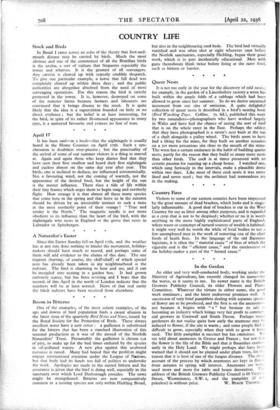In the Garden An older and very well-conducted body, working
under the Ministry of Agriculture, has recently changed its name—for the worse, as it seems to me. Its newer name is the Britis;, Growers Publicity Council, its older Flowers and Plant:, Committee. Whatever the virtues in either name, the good work continues ; and the latest endeavour promises well. A succession of very brief pamphlets dealing with separate specie,. of flower are to be produced, and the first is on the anemone— not because it begins with " a " but because its sale becoming an industry which brings very fair profit to commer- cial growers in Cornwall and South Devon. Perhaps many gardeners do not realise quite how early the anemone may be induced to flower, if the site is warm ; and some people find it difficult to grow, especially when they wish to grow it from seed. The little pamphlet is succinct but has omissions. We are told about anemones in Greece and France ; but not that the flower is the lily of the Bible and that it flourishes exuber- antly in the Holy Land. We might perhaps also have been warned that it should not be planted under plum trees, for the reason that it is host of one of the fungus diseases. The sholt account of the process by which anemones are kept in flower from autumn to spring will interest. Anemones are beim- used more and more for table and house decoration. T',- address of the British Growers Publicity Council is 68 Victor Street, Westminster, S.W. t, and the pamphlet (if to










































 Previous page
Previous page